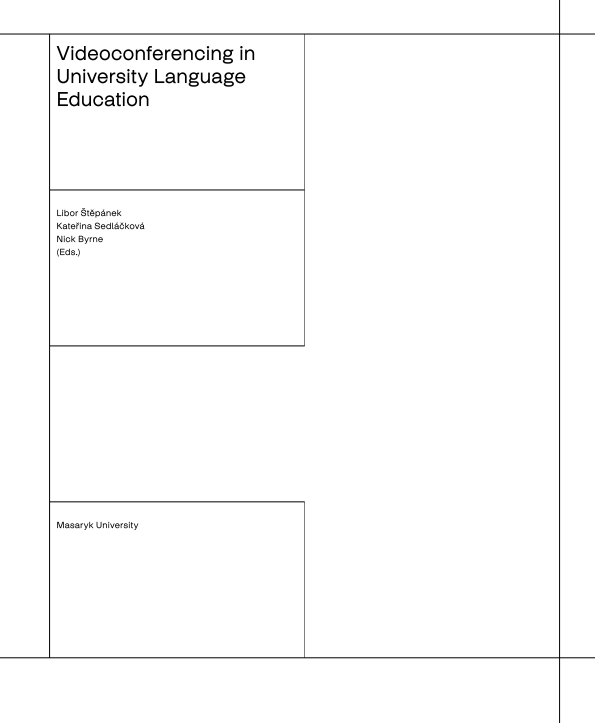
We kindly inform you that, as long as the subject affiliation of our 300.000+ articles is in progress, you might get unsufficient or no results on your third level or second level search. In this case, please broaden your search criteria.












One of the most apparent obstacles to DDL is the use of the technology itself – the computer with its query software and interfaces for accessing electronic corpora. Where this is the case, the obvious question is whether the computer can be successfully removed from the equation without losing the benefits of the overall approach. In the present study, two groups of lower intermediate level learners at a college of architecture were introduced to an English language corpus both ‘hands on’ and ‘hands off’. The learning outcomes of the two approaches were tested, and compared against feedback obtained at the start and again at the end of the course. The general conclusion is that paper-based DDL does represent a viable option: there is unlikely to be a single best version of DDL for all learners in all situations at all times, and variety and sensitivity to learner variation and local conditions is crucial.
More...
The purpose of this paper is to investigate on the potential role of social media in value co-creation relationships in a marketing and management perspective. It goes without saying how we witness importance of social media in achieving general marketing goals. Moreover, concept of value co-creation implies management initiative to develop closer and mutually beneficial interactive relationships between company and customers in order to further jointly cocreate acceptable outcome for parties involved. Authors will try to give a theoretical overview of potential portrayal of social media as a communicational channel/tool and its eventual footprint on value co-creation. What are the social media marketing and management elements useful to shape and influence the process of value co-creation? How did the academic public approach and elaborate this consanguinity? Primarily, by observing theoretical developments throughout academic prism, authors have been very much interested to tackle these questions. The research performed is theoretical, secondary-desk analysis. Publicly available sources of literature have been utilized. Academia shares contrasting attitudes when it comes to potential roles of social media in value co-creation. A group of analysed authors strongly supports this statement, whilst we have another cluster of authors who are severely opposing and claim that no solid findings are possible until more primary researches are performed.
More...
The paper deals with two current topics, which are social networks and personnel marketing. The review of literature in the paper is focused on the synergy that results from this connection. Personnel marketing as a new field defines an employee as a customer. To achieve higher satisfaction of this customer specific communication channels are used and social networks are one of them. This paper presents a two-level primary research. We have chosen the topic of the paper to fill in the information gap in the application of personnel marketing. The primary qualitative research using in-depth interviews has been applied for this purpose. It resulted in the identification of opportunities in the use of social networks, which was the first partial objective. These attributes were then used in primary quantitative research using electronic questioning. It resulted in the comprehensive overview of the importance of different options for the HR work and in the achievement of the second partial objective. The research was also focused on determining whether the size of the company influences the research result. The paper presents an overall summary of ways how to use social networks and shows the importance of the various ways through which the main objective of the research was achieved. The paper may serve as basis for future theoretical research, as well as it can help companies to implement social networks in their activities and thus increase their competitiveness.
More...
The authors concentrate on the variety and scope of roles filled by learners, the potential development of associated transferable skills, and the way videoconferencing facilitates this process. Key learner roles and their outcomes are described. Detailed advice is given as to how students can maximise their skills and how technology can best support them. A range of task-based collaborative activities are presented, and the underlying theory and practice are both described in order to balance their rationales.
More...
This chapter gives voice to the students using videoconferencing, in some cases for the first time. By doing so, a clear picture emerges of the challenges, frustrations, but ultimately beneficial experiences felt by students. The views and feelings expressed act as useful compass points for teachers setting up such courses. These can be helpful in avoiding future pitfalls.
More...
The authors use a case study with students of law to illustrate both the possibilities and limits of videoconferencing. This detailed article outlines the stages of course development, syllabus writing, integration of subject matter and technology, and mechanisms to ensure a successful outcome. Useful advice is provided not only in technical aspects but also in areas related to interpersonal transactions. This includes ensuring that student groups from different countries have time to acquaint themselves informally before embarking on the more formal aspects of the programme.
More...
The authors offer a detailed and informative insight into the changing role of the teacher in light of technology-driven changes in classroom teaching. Videoconferencing is an area which both demands and inspires a new methodology, and this article outlines the variety of specific but interlinked roles which help to ensure successful delivery. The case study chosen provides a wealth of examples which illustrate the scope of collaborative teaching and learning made possible by videoconferencing. These examples also provide a clear indication of the required skills and the consequent need for targeted staff development programmes to help develop the teachers of the future.
More...
The author underlines the importance of having a clear rationale for using videoconferencing. A detailed case study illustrates the pitfalls and challenges of technology and looks at key examples of mismatching. These include mismatches between the different expectations of students and teachers, between theory and practice, between desired aims and actual outcomes, and between the ideal applications and actual limitations of the technology on offer. The article discusses a range of problems and issues but also points to solutions and workarounds. It emphasises the importance of considering not only how technology is used and which type is chosen but also why technology is used at all.
More...
People across the world are living longer. According to the World Health Organization (2018), the world population that is older than 60 years will reach 22% by 2050, amounting to 2 billion people, which is a significant increase from 900 million in 2015. The number of older persons will outnumber children younger than five years. The pace of population aging is much faster than before, forcing all countries to face challenges that age brings, from health issues to human rights issues, each requiring proper policy response. As societies grow older due to increased longevity and improved health, older people change in terms of expectations they have related to life in the retirement age. There are many inspiring examples of older persons who want to pursue new activities, such as education, engage in a new career that corresponds to their passion neglected earlier, or continue to be a productive family or community member. It is not surprising to see that some older persons do not make a direct transition from employment to retirement but rather self-employment, implying a positively inverted U-shaped relationship between age and entrepreneurship. For example, to prove it, let us remember the founders of McDonald’s, Coca Cola and Kentucky Fried Chicken, were all over 50 years old when they established their business. One can conclude that older persons are heterogeneous, making aging difficult to handle research and policy-wise.
More...